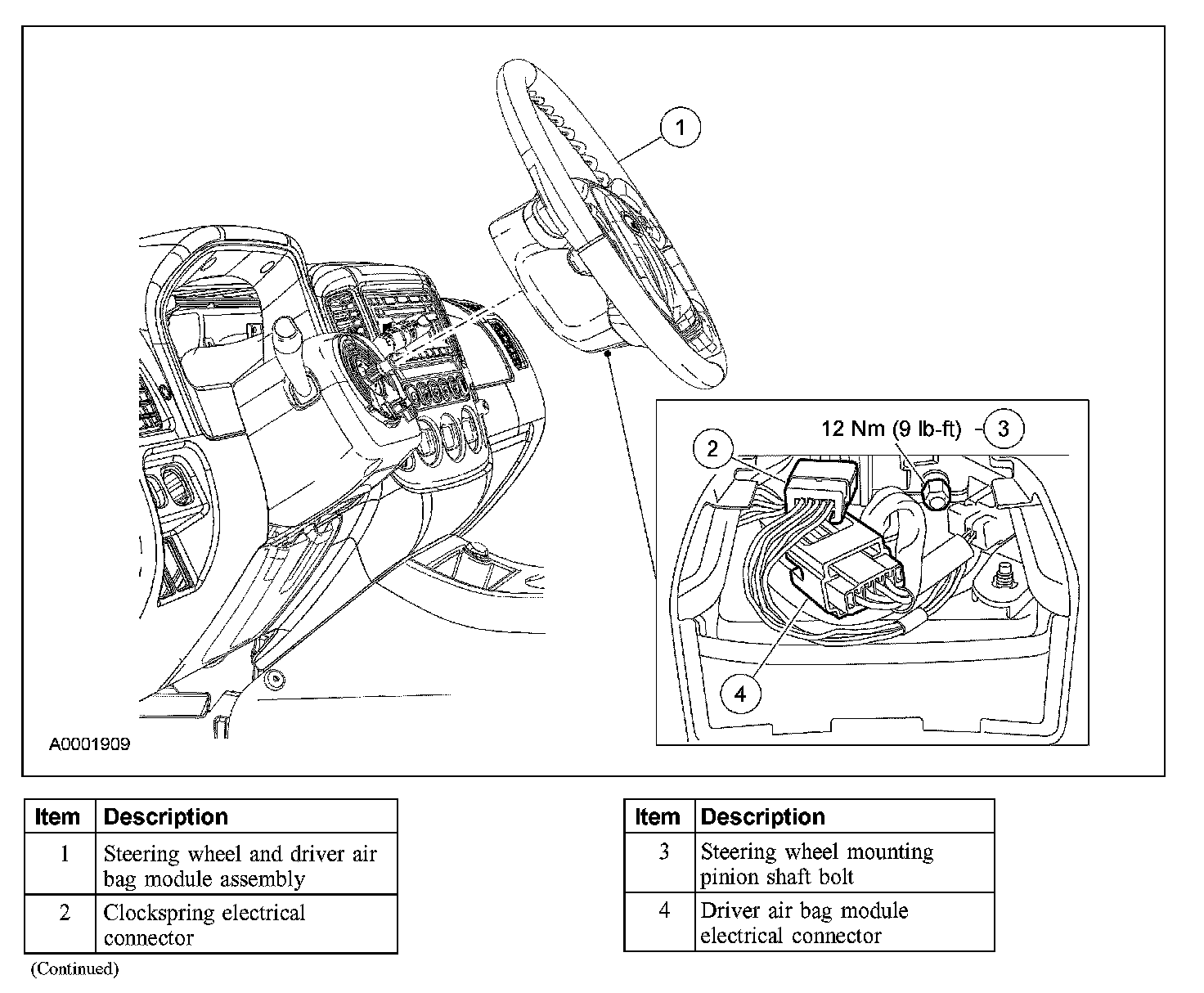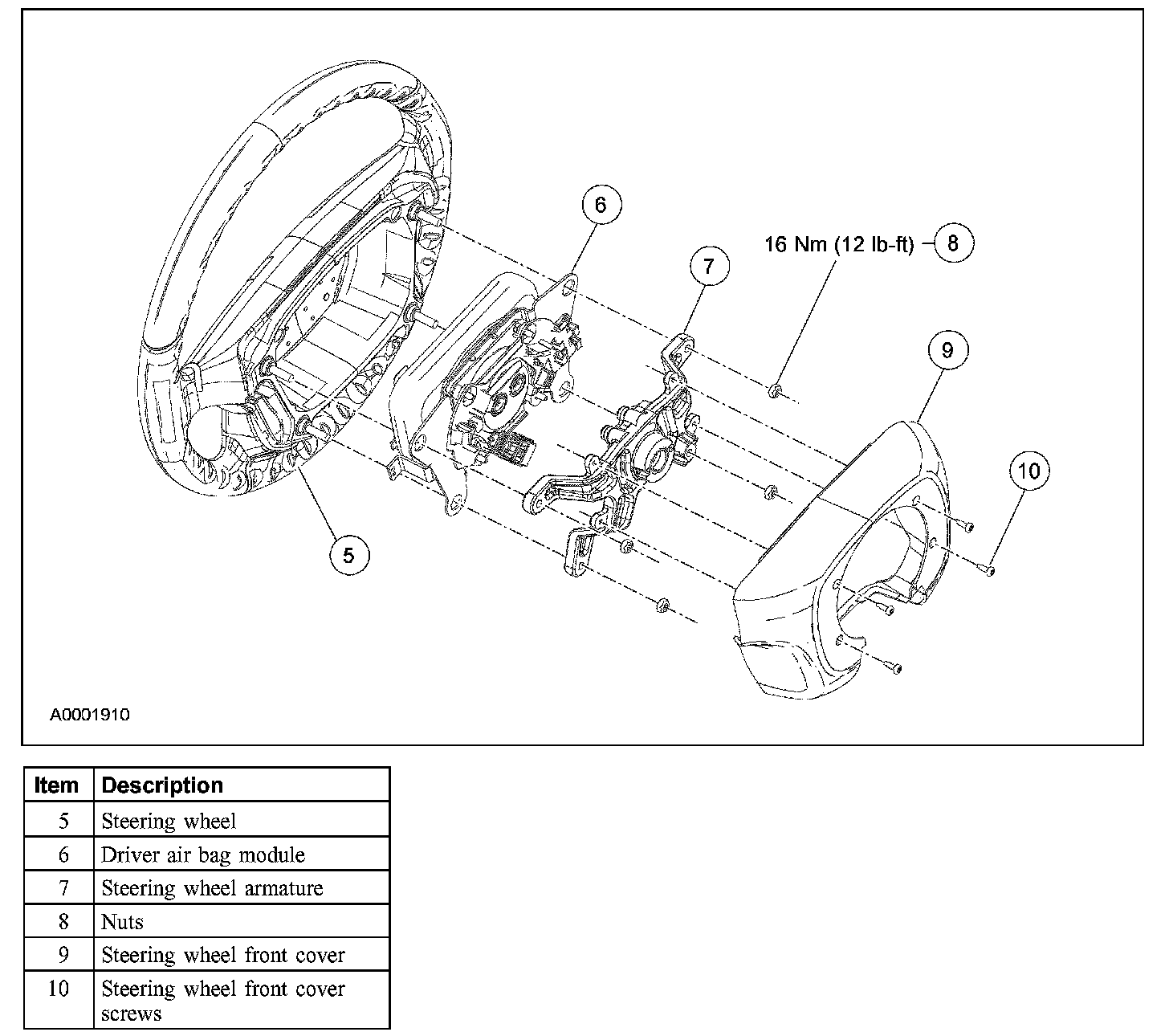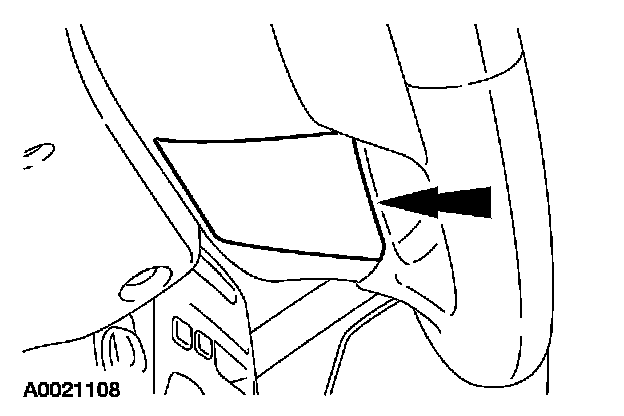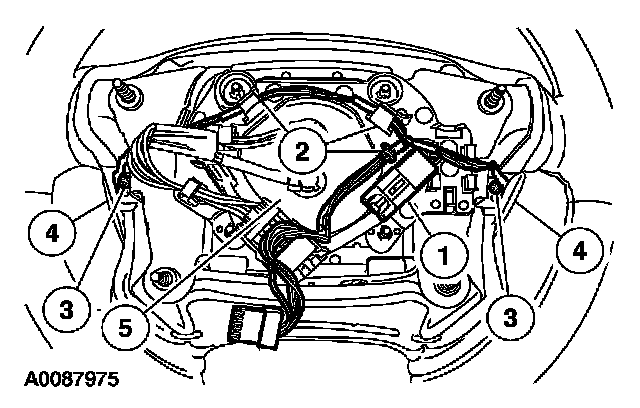Driver Air Bag Module
DRIVER AIR BAG MODULE

Removal and Installation
WARNING:
- Always wear safety glasses when repairing an air bag supplemental restraint system (SRS) vehicle and when handling an air bag module. This will reduce the risk of injury in the event of an accidental deployment.
- Carry a live air bag module with the air bag and trim cover pointed away from your body. This will reduce the risk of injury in the event of an accidental deployment.
- Do not set a live air bag module down with the trim cover face down. This will reduce the risk of injury in the event of an accidental deployment.
- After deployment, the air bag surface can contain deposits of sodium hydroxide, a product of the gas generant combustion that is irritating to the skin. Wash your hands with soap and water afterwards.
- Never probe the connectors on the air bag module. Doing so can result in air bag deployment, which can result in personal injury.
- When installing a drivers air bag module (soft pack), make sure there are no foreign objects in the steering wheel cavity or in the driver air bag module (soft pack). Failure to do so may result in personal injury in the event of an air bag deployment.
- Do not dislodge the fabric from the air bag module (soft pack). In the event that the air bag fabric becomes dislodged, install a new air bag module (soft pack). Failure to do so may result in personal injury in the event of an air bag deployment.
- Be careful not to pinch the air bag fabric between the steering wheel and the air bag module housing. In the event the fabric becomes pinched, install a new air bag module (soft pack). Failure to do so may result in the air bag not functioning properly.
- To reduce the risk of personal injury, do not use any memory saver devices.
NOTE:
- The driver air bag (soft pack) and steering wheel can be serviced separately or as an assembly.
- In the event of an air bag (soft pack) deployment, the air bag (soft pack) and the steering wheel must be serviced as an assembly.
- The air bag warning lamp illuminates when the RCM fuse is removed and the ignition switch is ON. This is normal operation and does not indicate a supplemental restraint system (SRS) fault.
- The SRS must be fully operational and free of faults before releasing the vehicle to the customer.
- Repair is made by installing a new part only. If the new part does not correct the condition, install the original part and carry out the diagnostic procedure again.
1. Depower the system.

2. Remove the steering wheel access cover.
3. Disconnect the 2 electrical connectors to the clockspring.
4. Loosen the steering wheel mounting pinion shaft to release the steering wheel from the steering column shaft.
- To install, tighten to 16 Nm (12 lb-ft).
5. Remove the steering wheel.
6. Remove the screws and the steering wheel front cover.
7. Remove the nuts and the steering wheel armature.
- To install, tighten to 16 Nm (12 lb-ft).

8. Disconnect the steering wheel accessories and remove the driver air bag module.
1 Disconnect and slide the connector off the wire shield.
2 Route the wire harness out of the wire shield.
3 If equipped, remove the screws.
4 If equipped, separate the switches from the steering wheel.
5 Lift the driver air bag module out of the steering wheel.
9. To install, reverse the removal procedure.
10. Repower the system.